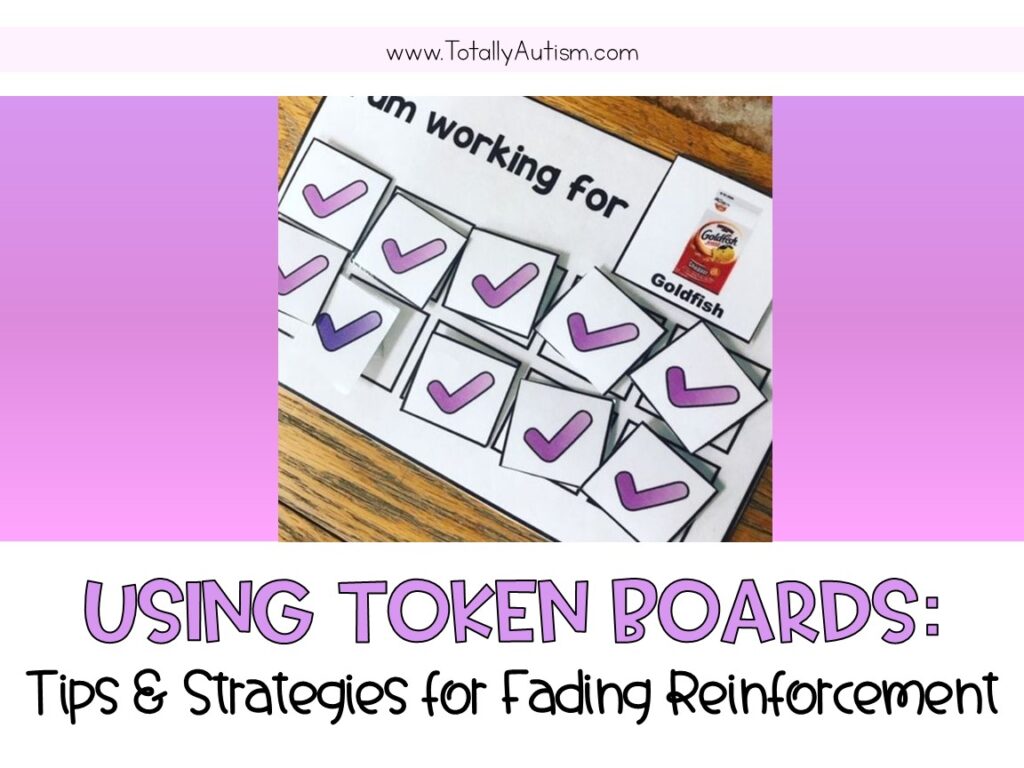
Last week I wrote about 5 reasons you should use token boards in your self-contained classroom. If you missed it, you can check out that post here.
I love using token boards because I can fade them away while maintaining the appropriate behavior I want in the classroom.
When you first introduce a token board to a student, they probably exhibit many escape-maintained behavior. In this instance, you want to start the student on a thick schedule of reinforcement. This means you want to reinforce after EACH response and token earned. This can be simple verbal praise, or this can also be a small piece of candy as the student puts a new token on their board. Pairing an edible with a token will help the student realize that tokens are good! This is sometimes called continuous reinforcement because the student gets reinforcement after each appropriate behavior. So, if the student uses a 5 token board, they will only need to emit 5 responses to earn their 5 tokens.
Learning time should be quick; their break will also come fast. Students will start to see this and become more “cooperative.” They will be more willing to work when they know that they get a break every time they earn those 5 tokens.
Time to fade reinforcement?
Once the student has the idea of the token board and is demonstrating success with a thick schedule of reinforcement, it is time to thin the schedule of reinforcement. This can be done in A LOT of different ways.
- fixed ratio schedule– Students will get reinforcement after a fixed interval of 2, 3, 4, or 5 responses. For example, I want to use a fixed ratio schedule of 3. After every 3 successful responses from the student, they will earn a token paired with social praise. Students who use a 5-token board will need to emit 15 responses before earning a break. The reinforcement ratio can continue to be thinned to a ratio of 4, 5, 6, etc….
- variable ratio schedule– Students will get reinforcement after a variable number of responses. For example, a variable ratio of 5 means the student will earn a token after an AVERAGE number of 5 responses. This is done so that the student doesn’t exactly know when they’ll be reinforced with a token. I might give the child a token after 2 responses one time but after 3 responses the next time, as long as it averages out to every 5 times.
- fixed interval schedule– this type of reinforcement schedule is used when you want to give the student a token based on the amount of time instead of the number of responses. This schedule is best used for behaviors such as sitting in a chair or playing appropriately with toys. The student may need to sit for storytime. A silent timer is set, and the student earns a token after 1 minute of sitting nicely. If they use a 5 token board, they will need to sit for 5 minutes before they can have a break. You may slowly increase the time the student needs to sit before earning each token.
- variable interval schedule– By now, you can probably guess what this schedule of reinforcement is. This is still working with the amount of time rather than the number of responses. The student is given a token after a variable rate of time (i.e. an average of every 5 mins). This means the student will not know exactly when they will receive their token.
With each of these options, you can continue to thin the schedule of reinforcement! The end goal is to totally fade out the token board. Let’s be real, we won’t be around the rest of the student’s life with a token board for them!
